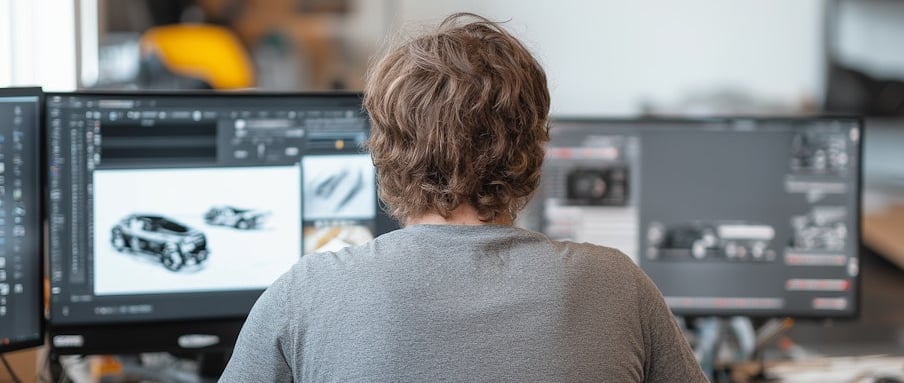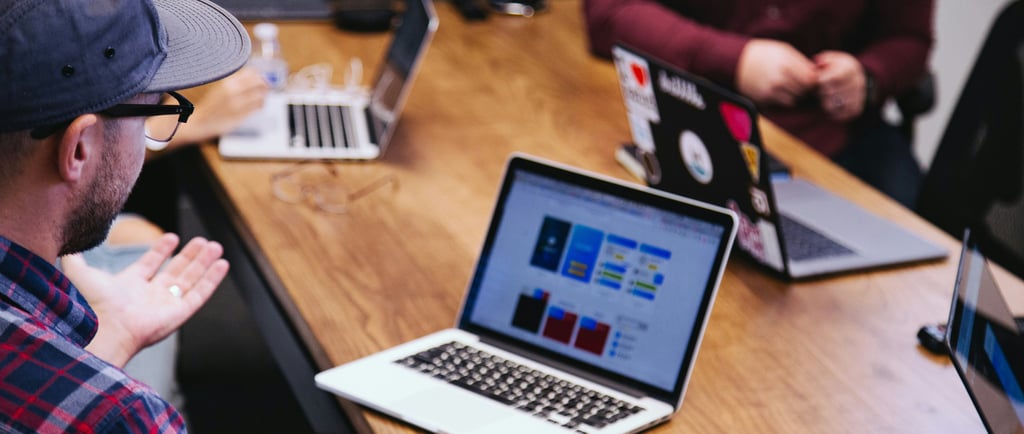Common Product Design Errors and How It Affects 3D Printing
Avoid Common Mistakes and Optimize Your Additive Manufacturing
Martí Segura
7/24/20254 min read


At Enginhum, we know that industrial design is the foundation of any successful product. However, in the era of 3D additive manufacturing and digital fabrication, common design errors can cost you time, money, and the functionality of your parts. Especially when it comes to designing parts for 3D printing, there are key considerations often overlooked.
In this article, we break down the most frequent failures in product design and, in particular, in design for 3D printing, offering practical solutions to ensure your projects move forward smoothly. If you are looking for an on-demand 3D printing service or technological consulting for your industrial processes, understanding these points is fundamental.
4 Common Product Design Errors
Before diving into 3D printing, it's vital to remember the general principles of industrial design that are often neglected:
1) Lack of Market Research and Customer Feedback
Designing without understanding real user needs is a direct path to failure. Without prior analysis, your product might not have the expected demand.
Solution: Involve your customers from the start of the process. Conduct market research, surveys, and gather constant feedback. At Enginhum, we offer consulting for technology companies to align design with market demands.
2) Underestimating Technical Complexity and Manufacturability
Many designs are aesthetically appealing but impossible or very expensive to mass-produce. This is crucial in industrial process design.
Solution: Integrate manufacturing and industrial design engineering experts from the initial phases. Apply the concept of Design for Manufacturing (DFM) to optimize production, reduce costs, and avoid costly reworks. Good technical process consulting can be your best ally.
3) Failure to Conduct Sufficient Tests and Prototypes
Early validation is key to detecting flaws before mass production.
Solution: Implement a rapid prototyping cycle. Technologies like 3D printing allow you to iterate on the design and validate the functionality of industrial components quickly and economically.
4) Neglecting Ergonomics and User Experience
A product may be functional, but if it's not comfortable or intuitive for the user, its acceptance will be limited.
Solution: Prioritize user experience (UX) and ergonomics from the beginning of the industrial parts design process. A user-centric design guarantees greater market success.
4 Specific Errors in Design for 3D Printing
Additive manufacturing offers unprecedented geometric freedom, but it also imposes its own rules and considerations to ensure the quality and functionality of parts. Here are some frequent errors we see in designs intended for an FDM printing service or any other 3D technology:
1) Not Considering Adequate Tolerances in Joints or Fittings
This is one of the most critical errors. Designing parts with press fits or excessively small tolerances without considering the inherent precision of the 3D printer can prevent assembly, create unwanted play, or require costly post-processing.
Enginhum Solution: For mobile or detachable fits, apply tolerances of 0.2–0.4 mm, depending on the geometry and printing technology (e.g., HP Multi Jet Fusion or SLA). For interference fits, consider at least 0.1 mm of interference. If millimeter precision is required (e.g., for bearing housings), plan for post-machining. Always consult ISO recommendations (IT grades) if you need controlled precision. Our engineering and industrial design team will guide you in choosing optimal tolerances.
2) Designing Clips or Snap-Fits Without Considering Material Mechanical Behavior
Designing these elements as if they were for injection molding can lead to breakage or permanent deformation in 3D printed parts, as printed materials can behave differently.
Enginhum Solution: Use cantilever or L or U-shaped clip designs with assembly angles between 35º and 40º to allow for necessary flexing. Avoid sharp corners and add radii in critical areas to better distribute stresses and prevent stress concentrations. Ensure the base thickness is not less than 1 mm. It is essential to calculate the assembly force (ideally ≤ 50 N) to ensure functionality without damaging the part. If your 3D manufacturing company seeks to optimize these elements, we can help.
3) Not Optimizing Part Orientation and Support Usage
Poor orientation of the part on the build platform can lead to structural weakness in critical directions, warping, or excessive consumption of support material, which increases costs and post-processing time.
Enginhum Solution: Analyze the part's geometry to find the optimal orientation that minimizes the need for supports, improves mechanical strength in load directions, and reduces printing time. Our on-demand 3D printing service includes this optimization as part of our pre-production process.
4) Designing Walls That Are Too Thin or Insufficient Structures
3D printed parts have limits on the minimum wall thickness they can reliably achieve without breaking during handling or deforming over time.
Enginhum Solution: Consult the design guides for each 3D printing technology (e.g., FDM, SLA, MJF) regarding minimum wall thicknesses. Reinforce structures where higher loads or stresses are expected, considering the infill pattern and material density.


At Enginhum, we not only offer a high-quality 3D printing service for 3D manufacturing companies or those looking to use 3D printers in businesses, but we also provide expert technological consulting. Our engineering and industrial design team is ready to help you avoid these and other design errors, ensuring your products are robust, functional, and competitive in the market.
Whether you need industrial component design, eco industrial design, or simply 3D services for prototyping or production, we are here to optimize your projects and help you successfully make the leap into additive manufacturing.
Ready to take your designs to the next level? Contact Enginhum and let's discuss how we can help you turn your ideas into reality.
Places
Castellar del Vallès, Barcelona, Cataluña
La Guardia, Pontevedra, Galicia
Connect with Enginhum
Contact with Enginhum
Marc Garnacho - +34 606.683.378
Martí Segura - +34 661.727.166
Information
Opening time
Monday to Thursday: 8:00 - 18:30
Friday: 8:00 - 15:00
